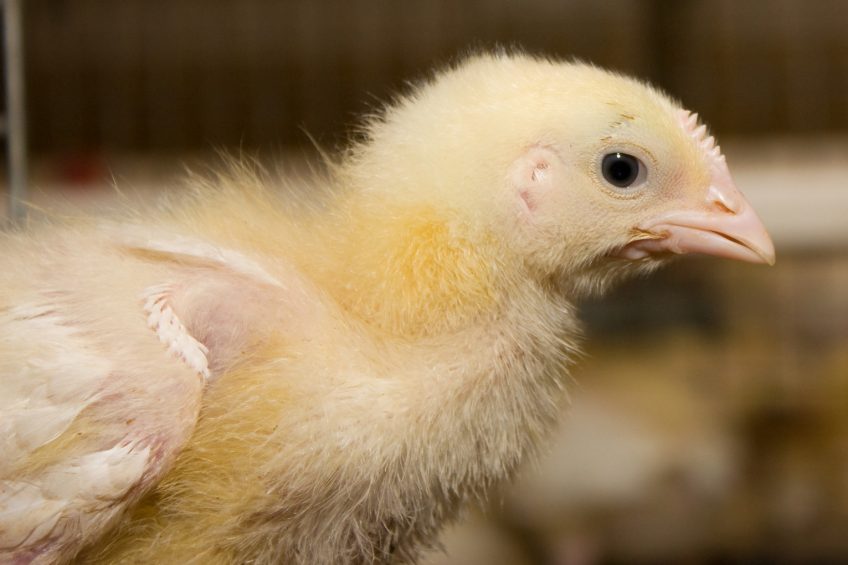Poultry Meat Outlook: Predictions for the year ahead

Tesco is continuously looking at welfare outcome measures from its poultry suppliers, which measure the symptoms of positive and negative welfare approaches in farm, transport and slaughter practices.
John Kirkpatrick, Tesco agricultural manager, said the outcome measures looked at the whole supply chain, including percentage mortality of birds, leg issues, hockburn, farm management practices, pododermatitis in poultry and antibiotic use until the end of life of the bird.
Sharing data with farmers
Information is gathered on a monthly basis, which is then anonymised and shared with farmers so they can utilise the data as a benchmarking exercise too identify best practice. Tesco uses the information to identify opportunities in the trends to drive improvement in animal welfare.
Mr Kirkpatrick said Tesco now had 3 years of global data and could look at its supply chain results across the UK, EU and non-EU suppliers.
Antibiotics: A huge issue for Tesco
Sharing some of the statistics, Mr Kirkpatrick said the use of antibiotics was considerably lower in the UK at 4.4mg/kg compared to a whole supply base of 8.1mg/kg and an EU average of 12.6mg/kg.
Antibiotics, he said, was a huge issue for Tesco, but that they were still needed. Tesco is supporting R and D opportunities with product partners and the Government Agritech Centres of Innovation to identify ways to drive the reduction of on farm antibiotic use.
UK levels of pododermatitis and hockburn
One area that the industry needed to consider, he said, was levels of pododermatitis and hockburn, which were far higher as a percentage in broilers in the UK than its other global suppliers.
For example, 35.2% of UK birds were suffering from a degree of pododermatitis compared to 21.4% in the EU and 20.7% in the rest of the world. Figures for hockburn show a level of 19.5% in the UK as against 7.9% in the EU and 4.2% in the rest of the world.
Growth in the poultry sector
“We need to have people who share our vision… partners who buy in to the science, evidence and facts.
“We have seen monumental growth in this sector – huge successes, quality value, innovation, service which have all been driven forward.
“Supply chain businesses are absolutely key to all but risk management strategies are also very important going forward. We need to maintain and enhance standards and challenge those that don’t. We need to engage in discussions with NGOs and be proud of what we do because we are the envy of many
Nuffield scholar Patrick Hook said the sector was in a great position, enjoying growth of between 2-4% a year with consumers viewing chicken as a healthy, versatile protein.
Challenges within the poultry sector
However, Mr Hook said the industry faced a range of challenges including pressure to further reduce antibiotic use despite making considerable progress in this area, including a fall in prophylactic treatment of around 75% between 2012-6.
– Antibiotic-free poultry is not sustainable
He said antibiotic-free poultry was not in the interests of bird welfare and would leave the farmer exposed: “It is better to use them in a responsible, targeted way,” he told delegates.
– Avian influenza
Another issue that will not go away is avian influenza, that had really challenged the sector in 2016/7, and he stressed the industry should never become complacent about the threat.
– Animal extremists
The EU Broiler Ask was slowly gaining momentum across Europe and Mr Hook said it was important that broiler breeder companies should be able to show welfare organisations that they had in their portfolio the option of slower growing breeds for farmers to use.
And the threat of animal extremists, vegan groups and activists, who were determined to target the industry, should not be dismissed.
– Brexit
Describing Brexit as “the white elephant in the room”, Mr Hook said it was vital that the European market was maintained and that retailers continued to source and sell British chicken to enable the industry to have confidence to move forward.
Workers from the EU were needed to help the industry post Brexit: “We need people from the EU to come and help us – our agricultural sector contains 30% EU labour and the processing side is heavily dependent.”
While he believed there was renewed interest from young people in moving into the poultry sector, they would not replace people in factories, prompting concerns about where processed chicken would originate.













